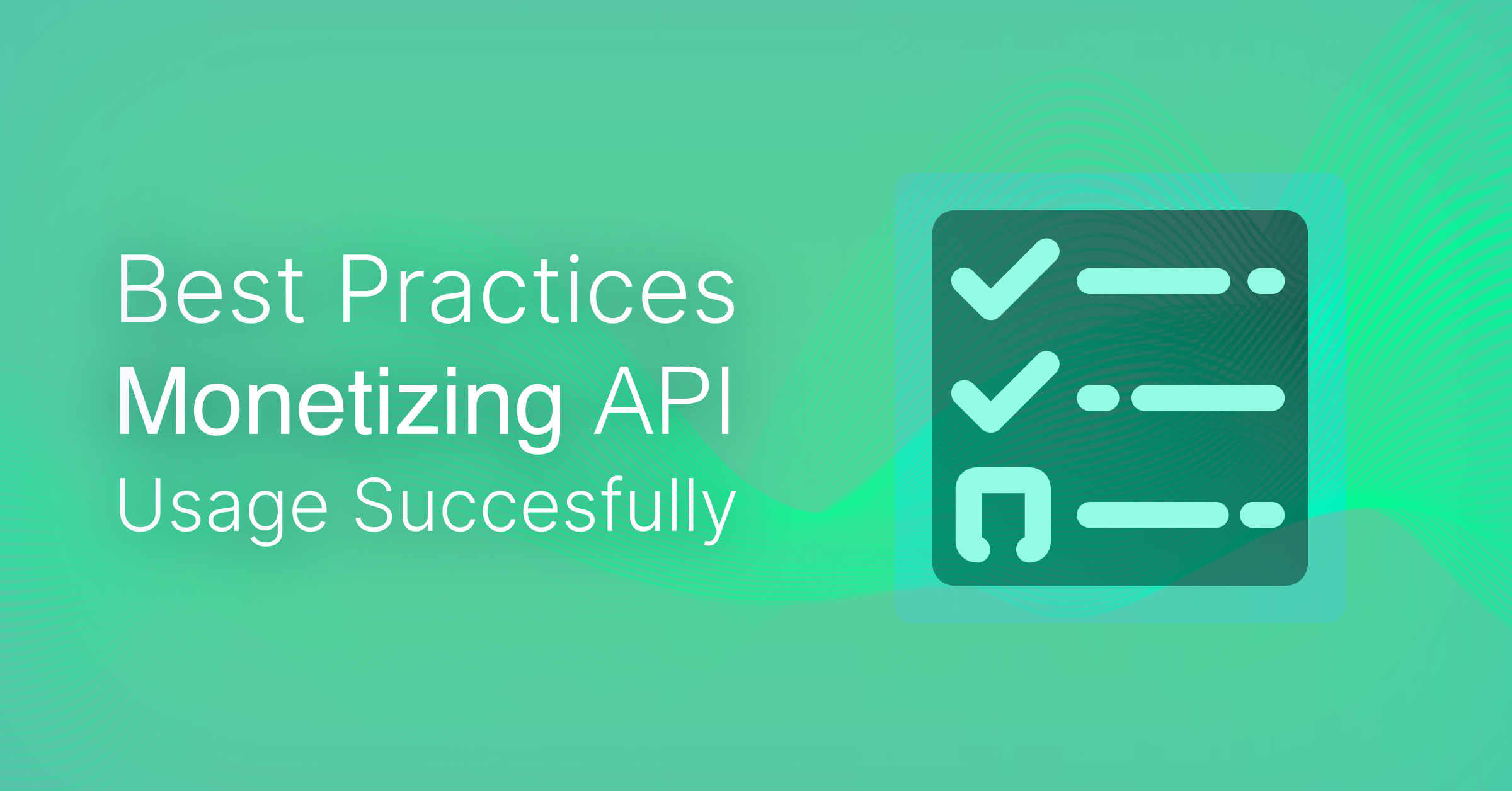Best Practices for Monetizing AI Successfully

Artificial intelligence has become a driving force behind modern innovation, helping businesses across all industries optimize processes and generate income. But how do you monetize AI usage effectively? Whether you’re integrating AI features into an existing plan or launching entirely new AI products, choosing the right approach can unlock steady revenue growth and strengthen competitive advantage.
In this article, we’ll explore several proven monetization strategies for artificial intelligence, from direct monetization to indirect monetization, and shed light on developing an AI pricing strategy that suits your target audience. We’ll also highlight best practices for defining value metrics, managing cost structures, and building long-term customer satisfaction. By the end, you’ll see how even a significant investment in AI can be recouped through the right pricing model and thoughtful execution.
Understanding AI Monetization
“Monetizing AI” involves generating revenue from artificial intelligence tools, such as AI-powered tools, AI chatbots, or AI-enhanced analytics. To effectively monetize AI usage, businesses typically offer AI capabilities—such as NLP, computer vision, or large language models—as paid features or standalone solutions that deliver actual value to customers.
Businesses can adopt a variety of monetization strategies, including usage-based pricing, bundled pricing, or a value-led pricing strategy. Regardless of the approach, the key is to determine how much value your AI functionalities bring to users and to align pricing with that actual usage. Doing so ensures customers feel they’re paying the right price point for the benefits they receive.

What is AI Monetization?
AI monetization refers to the process of generating revenue from artificial intelligence (AI) capabilities, features, and products. This involves developing and implementing effective pricing strategies, packaging, and licensing models to capture the value created by AI. For businesses, AI monetization is critical to recoup their investments in AI research, development, and deployment. By strategically leveraging AI capabilities, companies can unlock new revenue streams, enhance customer experiences, and maintain a competitive edge in the market.
Why It Matters
Monetizing AI is more than just an opportunity—it’s quickly becoming a necessity for businesses looking to stay competitive. AI is reshaping industries by improving efficiency, personalizing customer experiences, and driving automation. However, understanding how to extract real monetary value from AI investments is a challenge that many businesses face. By leveraging the right strategies, companies can ensure that their AI innovations not only enhance operations but also contribute directly to revenue growth.
-
AI can reduce manual labor and handle complex tasks that would otherwise require human intelligence. By automating repetitive processes, AI allows employees to focus on higher-value work, leading to increased productivity and cost savings. Additionally, AI-driven automation can scale operations more efficiently, handling large volumes of data-driven tasks without the need for proportional increases in workforce size.
-
AI uncovers insights in usage data for better decision-making and customer behavior analysis. By leveraging machine learning algorithms, businesses can detect patterns, predict future trends, and personalize customer interactions. AI-driven analytics can provide real-time feedback, allowing organizations to refine marketing strategies, optimize pricing models, and enhance customer segmentation for maximum impact.
-
Many organizations incorporate generative AI (e.g., AI-generated art) to differentiate their offerings. This includes leveraging AI to create unique marketing assets, generate personalized content at scale, and develop innovative digital products that stand out in competitive markets. Additionally, businesses are using AI to streamline creative workflows, reducing costs and enhancing efficiency in content production.
Ultimately, artificial intelligence can be a significant investment. However, with proper planning and a well-defined AI monetization strategy, it becomes easier to monetize AI usage and see a return on that investment.
Key Trends in AI Monetization
The AI monetization landscape is rapidly evolving, with several key trends emerging. Businesses are continuously exploring innovative ways to capitalize on AI’s capabilities, from advanced pricing models to AI-driven market analysis. As AI adoption increases across industries, companies must stay ahead of these trends to maintain a competitive edge and unlock new revenue streams.
-
Hybrid Pricing Models: Companies are increasingly adopting hybrid pricing models that combine subscription-based, usage-based, and tiered pricing. This approach allows businesses to capture the value of AI features and products more effectively by aligning pricing with customer usage and needs.
-
Value-Based Pricing: AI vendors are shifting towards value-based pricing, where the price of AI features and products is tied to the actual value they deliver to customers. This ensures that customers perceive they are getting their money’s worth, fostering long-term satisfaction and loyalty.
-
AI-Powered Pricing Optimization: Companies are leveraging AI-powered pricing optimization tools to analyze customer behavior, market trends, and competitor pricing. These tools help businesses fine-tune their AI pricing strategies, ensuring they remain competitive while maximizing revenue.
-
Increased Focus on Customer Lifetime Value: AI vendors are prioritizing customer lifetime value (CLV) as a key metric to measure the success of their AI monetization strategies. By focusing on CLV, companies can develop strategies that enhance customer retention and drive long-term profitability.
By taking a structured approach to AI monetization, businesses can harness the full potential of their AI investments. Whether through direct revenue models, data-driven insights, or enhanced customer experiences, AI presents numerous opportunities to generate income and improve operational efficiency. The key lies in selecting the right strategy, continuously optimizing offerings, and adapting to market trends to stay ahead of the competition.
Identifying AI Capabilities
Identifying AI capabilities is crucial for developing effective AI monetization strategies. Understanding the full range of AI functionalities allows businesses to leverage these technologies in innovative ways, enhancing both operational efficiency and revenue potential. By identifying AI capabilities, companies can better align their offerings with customer needs, optimize pricing structures, and create unique value propositions that set them apart in competitive markets. AI capabilities can be categorized into several types, including:
-
Machine Learning: Machine learning capabilities enable AI systems to learn from data and improve their performance over time. This can be applied in various domains, from predictive maintenance to personalized recommendations.
-
Natural Language Processing: Natural language processing (NLP) capabilities enable AI systems to understand and generate human language. This is essential for applications like chatbots, virtual assistants, and sentiment analysis.
-
Computer Vision: Computer vision capabilities enable AI systems to interpret and understand visual data from images and videos. This technology is used in areas such as facial recognition, autonomous vehicles, and medical imaging.
-
Predictive Analytics: Predictive analytics capabilities enable AI systems to analyze data and make predictions about future outcomes. This is valuable for applications like demand forecasting, risk assessment, and customer behavior analysis.
-
Large Language Models (LLMs): LLMs enable AI systems to process and generate human-like text, facilitating advanced applications like conversational AI, content creation, and automated code generation. These models are widely used in virtual assistants, customer service automation, and knowledge management solutions.
By staying informed about emerging AI trends and continuously refining strategies, businesses can maximize the value of their AI investments. The evolving landscape of AI presents endless opportunities, and companies that adopt a proactive approach will be best positioned for long-term success.
AI Features and Products
AI features and products can be monetized in various ways, including leveraging AI-driven automation, enhancing existing services with intelligent capabilities, and integrating AI-powered insights into business operations. Companies can implement diverse strategies to create new revenue streams, expand market reach, and differentiate their offerings from competitors.
-
Direct Monetization: Charging customers directly for AI features and products through one-time purchases, subscriptions, or pay-per-use models. Businesses can implement this by offering premium AI functionalities, API access, or AI-driven enhancements as paid upgrades. Additionally, companies can monetize AI through licensing agreements, enterprise contracts, and tiered service offerings that provide advanced capabilities for higher fees. The flexibility of direct monetization allows organizations to tailor pricing structures to customer needs while ensuring a steady revenue stream from AI innovations.
-
Indirect Monetization: Generating revenue from AI features and products through indirect channels, such as advertising, data analytics, or strategic partnerships. Businesses can leverage AI to enhance targeted marketing campaigns, optimize customer insights for improved engagement, and create AI-driven solutions that drive customer retention. Additionally, companies can monetize AI by offering data-driven insights to third parties, providing enhanced analytics for advertisers, or integrating AI-powered recommendations into existing services to increase value without direct fees.
-
Freemium Models: Offering basic AI features and products for free while charging customers for premium features and products. This approach allows businesses to attract a large user base and demonstrate the value of their AI-driven services. Free-tier users can experience core functionalities, increasing the likelihood of upgrading to paid tiers for advanced capabilities, enhanced performance, or additional integrations. Many successful AI companies use freemium models to create a strong customer pipeline while monetizing premium-tier users effectively.
-
Subscription-Based Models: Charging customers a recurring fee for access to AI features and products, providing a steady revenue stream. Subscription models allow businesses to build predictable revenue while fostering long-term customer relationships. Companies can structure subscriptions with multiple tiers, offering varied levels of AI functionalities, customer support, or additional integrations. Many AI-driven platforms use this approach to provide ongoing updates and improvements, ensuring continued customer value and retention.
By implementing the right monetization strategy, businesses can unlock the full potential of AI-driven features and products. Whether through direct sales, indirect revenue streams, or subscription-based models, companies can leverage AI to enhance their offerings and drive long-term growth. The key is to align monetization strategies with customer needs, ensuring both value delivery and sustainable revenue generation.
Pricing Models for AI
Selecting the right AI pricing strategy is crucial to profitability. A well-structured pricing model ensures that businesses can maximize revenue while maintaining customer satisfaction. Companies must consider factors such as market demand, competitive positioning, and scalability when determining the most effective approach. Common models include:
-
Usage-Based Pricing: Charging per transaction, per query, or per processing cycle.
-
Tiered Pricing: Offering multiple subscription tiers, each unlocking different AI features.
-
Value-Based Pricing: Pricing AI based on perceived value and user impact.
Choosing the right pricing model for AI solutions can significantly impact revenue and customer adoption. By aligning pricing with usage patterns, feature accessibility, or perceived value, businesses can optimize profitability while ensuring customer satisfaction. A flexible approach allows companies to adapt to market trends and evolving user needs, creating a sustainable and competitive pricing strategy.
Operationalize Your AI Monetization Strategy
To successfully monetize AI, businesses need the right infrastructure, compliance measures, and performance monitoring. Best practices include:
-
Building a solid AI infrastructure: Partnering with AI providers or developing in-house expertise.
-
Using AI pricing optimization tools: Leveraging AI-powered insights to refine pricing strategies.
-
Focusing on customer feedback: Implementing beta programs to assess user value.
-
Ensuring security and compliance: Adhering to data protection regulations like GDPR and CCPA.
By focusing on these key operational elements, businesses can effectively implement their AI monetization strategy, ensuring that their AI capabilities are not only innovative but also profitable. A well-executed strategy involves a combination of robust infrastructure, strategic pricing, and a commitment to customer satisfaction.
Conclusion
Successfully monetizing AI requires a blend of pricing strategy, value metrics, and ongoing customer engagement. Whether through direct monetization or indirect monetization, aligning AI functionalities with real-world user needs is key to driving revenue and maintaining a competitive edge.
If you want to experience how an AI-powered API platform can transform your API product management, sign up today for a free trial, no credit card required.






